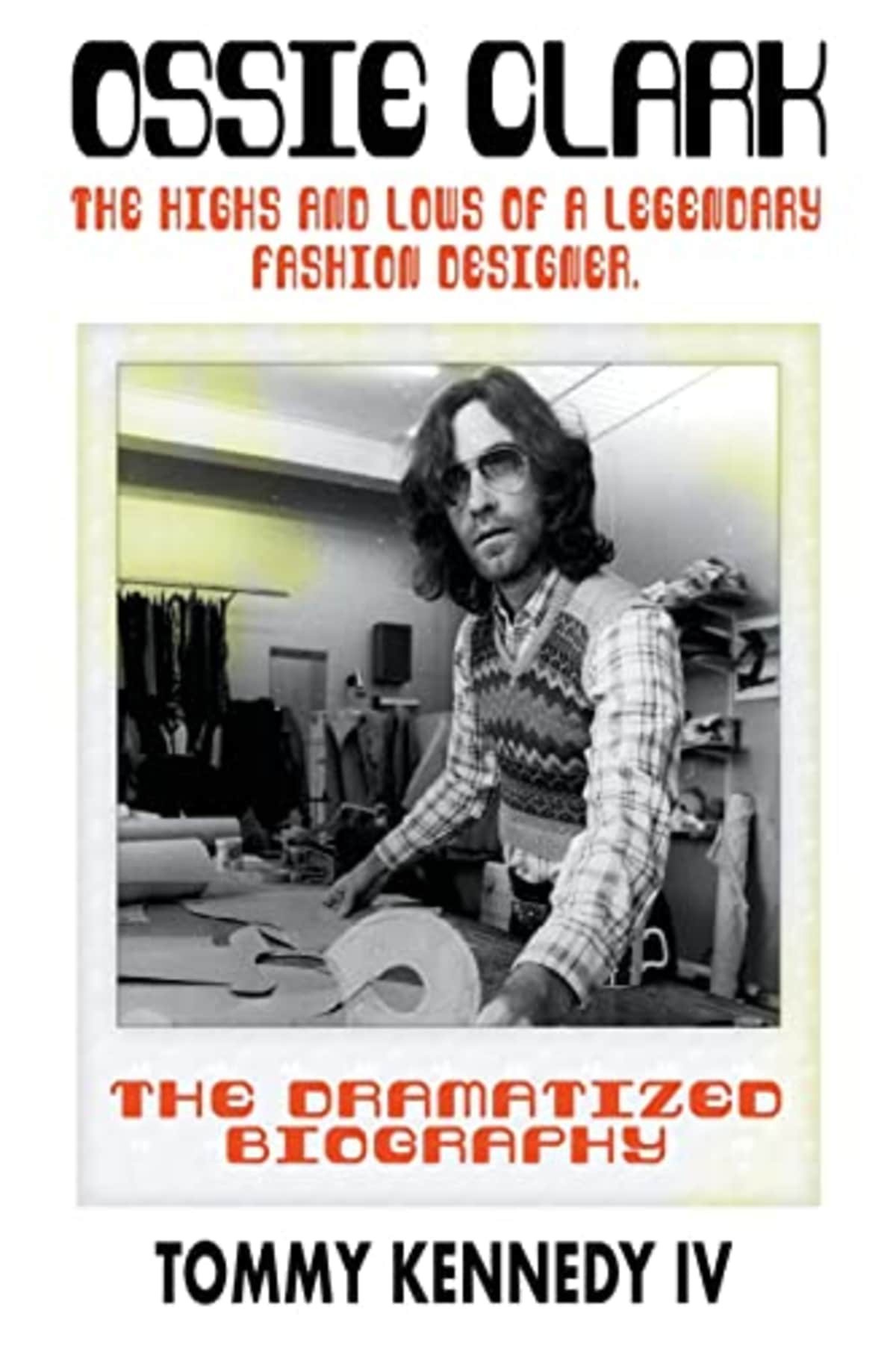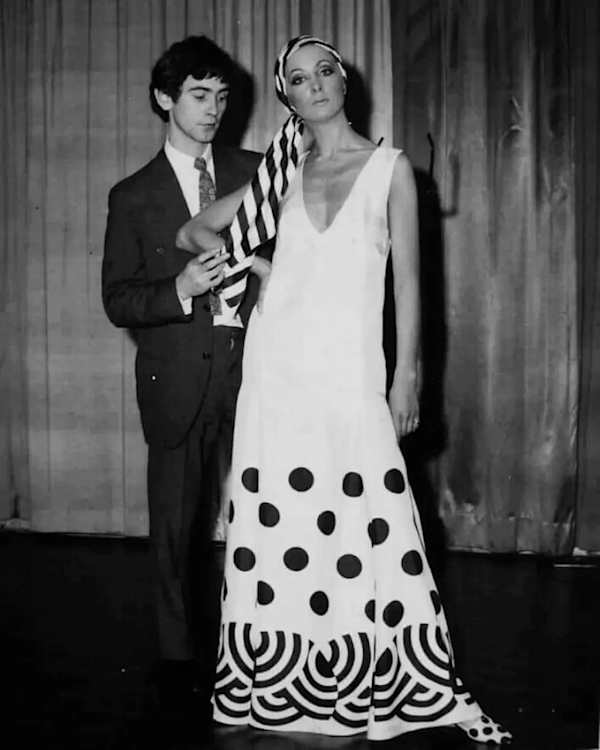

In 1965, the air inside the Royal College of Art felt electric. Like a kettle coming to the boil, the atmosphere buzzed with the birth of something new—something that would redefine British fashion forever.
Ossie Clark, a Warrington lad with a natural swagger and an eye that could slice through convention, stood right at the centre of it. He’d spent his RCA years under the legendary Janey Ironside, mastering the craft, studying the old rules. But that day, he didn’t just bend them. He tore the whole book up.
This wasn’t graduation. This was ignition.
The Class of ’65: A Northern Spark in Swinging London
The mid-60s Royal College of Art was more than an art school. It was a pressure cooker of genius—an explosion waiting to happen. Ossie wasn’t the only one rewriting the script.
Names that would shape British culture for decades were sitting in those same studios:
Zandra Rhodes, the fearless textile visionary with her punk-meets-pastel energy.
Victor Burgin, already sketching the ideas that would form the backbone of conceptual art.
They all shared the same pulse, the same hunger. They weren’t copying Paris or Milan—they were creating their own visual language, one stitched from youth, rebellion, and wit.
The North had arrived in London, and London didn’t stand a chance.
The Lightning Strike: Ossie’s Final Show
Ossie’s graduation show didn’t just impress—it detonated.
Forget the stiff tweeds and polite silhouettes that defined post-war Britain. Ossie’s designs moved. His dresses danced when the models walked, alive with rhythm and risk. He turned bias-cut chiffon and crepe into liquid sculpture. His tailoring wasn’t just sensual—it was democratic. It didn’t care where you came from, only how you carried it.
Then came the showstopper.
A dress laced with lightbulbs right down the front—bright, brash, and unapologetically Pop. It wasn’t fashion; it was revolution.
When the applause came, it wasn’t polite. It was wild. Cameras flashed. Reporters scribbled. And in that moment, Ossie Clark didn’t graduate. He ascended.
You can’t teach that kind of brilliance. It was something born in him—stitched into his Northern DNA.
Quorum and the Coincidence of Genius
The next day, London’s fashion press lost its mind. Vogue called before the ink was dry on his degree certificate.
And then came Alice Pollock, owner of the iconic Quorum boutique on the King’s Road—the beating heart of Swinging London. She signed him on the spot. One phone call, one partnership, and the rocket took off.
Not long after, Celia Birtwell joined the story. She and Ossie became a creative supernova—his sharp tailoring colliding with her dreamlike prints. Together they built the visual soundtrack of late 1960s Britain: freedom, sensuality, and a new kind of glamour born from working-class grit and artistic fire.
They weren’t just a design team. They were a love story stitched into the fabric of a decade.
From Warrington to the World
When Ossie Clark walked out of the RCA that day, the ground shifted.
He wasn’t following fashion anymore. He was standing on top of it, calling the shots.
The Northern boy had conquered London. And in doing so, he’d rewritten what British fashion could be—bold, fluid, fearless, and entirely his own.
The highs that followed came fast and bright. And for a while, he burned hotter than anyone.
Ossie Clark, Royal College of Art, British fashion history, Swinging London, Warrington designer, 1960s fashion revolution, Celia Birtwell, Zandra Rhodes, Quorum boutique, King’s Road London, working-class creativity, RCA Class of 1965.


